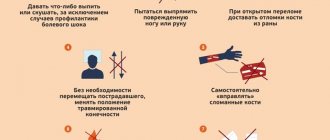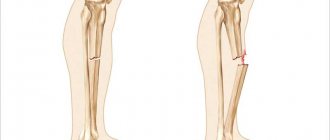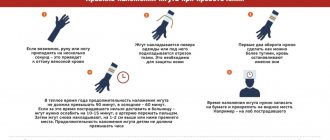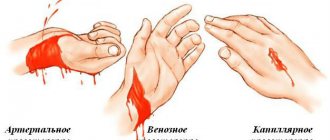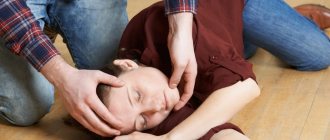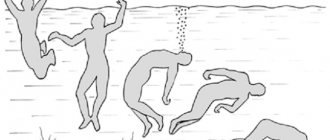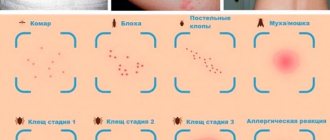What is a bruise
Bruise is the most common type of household injury, typical for children, athletes and people engaged in heavy physical labor. It represents damage to internal organs and tissues without significant disruption of their structure, and abrasions may occur. In case of bruises, the dermis and the vessels located under it are most vulnerable, which leads to the formation of hematomas and edema. A severe bruise poses a serious danger as internal organs may be injured.
To prevent the development of necrotic processes, it is important to be able to competently provide first aid for bruises of various origins.
Signs of bruise
The main signs of a bruise are:
- pain in the damaged area;
- hemorrhage due to damage to capillary vessels;
- formation of hematoma and edema.
Depending on the location of the injury, bluishness and swelling may appear immediately, as occurs in the case of damage to the subcutaneous tissue and upper layers of the skin. In the case of bruises of deeper tissues, a hematoma may appear after several hours or even days. The swelling accompanying the injury reduces the mobility of the injured organ, creating discomfort when moving.
The victim experiences the most severe pain immediately after a soft tissue injury, and after a couple of hours it subsides. When pressed, the pain increases. Swelling may increase over several hours, sometimes days.
Main classification
In order for the provision of assistance to give effective results, doctors recommend first understanding what was the primary source of traumatization. Often, medical attention may be needed for those who have suffered a severe blow from a blunt object, but have not damaged the integrity of the skin.
This happens in case of an accidental fall, in case of ice and in case of injuries of a domestic nature, when, for example, a heavy object falls on a finger. Despite the fact that the skin remains almost intact, as happens with sprains, this does not mean that the lesion can be ignored.
At the site of the impact, a swelling first appears, which quickly gives way to a hematoma, and then begins to hurt very much, especially when pressing on the bruised area.
Content:
- Main classification
- Features of bruises
- Hidden danger
- First aid
Most often, doctors record soft tissue bruises. The most dangerous of them is a head blow, since there is still a possibility of damage to stable brain activity. No less often, specialists working in the trampoline have to deal with injuries to the periosteum or joint.
In the latter case, you can feel the side effects of carelessness within a couple of hours. When the articular part of the limbs is affected, this is expressed not only in limited functionality. The victim has to suffer from an increase in the size of the joint itself, as well as increased pain, which is especially acute during even minor movements.
If there is a pathology of the knee, then it will not be possible to fully straighten the sore leg, as this brings real suffering. In this case, it is necessary to correctly distinguish a bruise from a dislocation.
Among other areas of the body, the following are most often subject to bruises:
- neck;
- back;
- rib cage;
- spine.
But if, with a mild degree of damage to the finger, you can neutralize all the unpleasant consequences yourself, having the proper skills, then if you hit your head, it is strictly forbidden to delay visiting the doctor. This even extends to situations where the victims feel like everything is fine with them. Latent development of side effects is common, so after a dangerous situation you should immediately consult a doctor.
Outwardly, discomfort can only be indicated by a small swelling, which is popularly called a “bump.” But an irreversible process may take place inside, which will begin to signal itself a little later:
- loss of consciousness;
- nausea with vomiting;
- weakness.
All of the above indicate more severe damage, which may even include a concussion. For injuries of this kind, only experienced specialists with appropriate diagnostic equipment can provide qualified assistance in a hospital setting.
No less dangerous in practice are neck bruises, which are often accompanied by disturbances in the stable activity of blood flow in nearby vessels, which slows down the usual blood supply to brain cells.
Almost the same applies to back bruises, due to which the blood supply to the spinal cord will be in question. This complication can be identified using a sensitivity test of the leg and upper limbs, as well as a functional test of muscle activity.
The severity of a sternum contusion depends on the area affected and the pressure applied. Usually only soft tissues are affected. But if there was a fall from a great height, then stopping cardiac activity or breathing is a common occurrence. Other internal organs are often affected, which ideally describes the clinical situation with bleeding due to rupture of the spleen and liver.
Degrees of injury
Bruises vary in severity:
- the first is a mild injury that does not require treatment;
- the second is a bruise of muscle tissue, accompanied by severe pain, the formation of edema and bruises;
- third, tendons may be damaged as a result;
- fourth - bruise of internal organs with severe swelling and pain.
A severe bruise may be accompanied by a closed fracture, so in this case it is especially important to immediately consult a doctor for a thorough diagnosis and treatment.
What types of fractures are there?
There are open and closed fractures. In an open fracture, the damaged bone injures the skin. The main danger of an open fracture is large blood loss, possible infection in the wound and further development of the inflammatory process.
Another type of fracture is a displaced fracture. In a displaced fracture, the position of the bones relative to each other is disrupted. A compression fracture is a strong compression of bones.
The use of folk remedies
Competent first aid, provided in a timely manner, significantly alleviates the victim’s condition, speeds up the healing process, and reduces the risk of possible complications.
In case of a bruise, it is advisable to apply cold to the injured area, for example a bag of frozen vegetables from the freezer, wrapped in a clean cloth. Ice can be kept for up to 40 minutes, preventing hypothermia, then take a break for 20 minutes. Repeat several times over 4-5 hours. This event helps relieve swelling and prevents the inflammatory process from developing. If the victim has severe pain, you can give him a painkiller.
It is not recommended to resort to folk remedies such as raw potatoes, oil dressing and others. If the bruise is accompanied by abrasions and scratches, which is often found in children, then in this case there is a high probability of infection.
has developed special products that can be used as first aid for bruises.
First, you should treat your hands with the antiseptic “Sterillum”. After this, you need to clean the area around the abrasion or the bruise. For a small abrasion, you can apply a bandage with Branolind N Peruvian balm and leave it in place for up to three days without dressing.
For better fixation of the bandage, use the Peha-Haft self-fixing bandage. It is securely attached by simply pressing one layer to another, does not stick to hair or skin, is economical (1.5–2 turns are enough for reliable fastening), and is available in different colors.
For bruises and abrasions, you can use Cosmopor Antibacterial adhesive bandages. The soft pad absorbs discharge from the abrasion well, and the silver-containing layer reliably protects the bruise site from infection. Cosmos Kids patches with different designs are produced for children.
Special patches from the Omni series have been developed for people with sensitive skin. Their adhesive surface is made of rubber glue, and the patch itself is made of non-woven hypoallergenic material or rayon.
In case of a bruise with a sprain, use a Putterbint cotton compression bandage to improve blood circulation and relieve swelling.
First aid for bruises
To speed up the resorption of the hematoma, you will need a bandage with a special ointment. The therapeutic compress is fixed with a special bandage. Manufacturers produce dressings that are economical and easy to use. Self-fixing bandages have a number of advantages:
- crepe weaving and micro-dot impregnation with a special adhesive composition ensure precise and reliable fixation of the bandage;
- the initially high cost is compensated by economical consumption - two turns of the bandage are enough to fix;
- 85% stretchability ensures freedom of movement and prevents the bandage from slipping;
- aesthetics. The special bandage is available in different colors; there is no fringe around the edge.
If the bruise is accompanied by capillary bleeding, the procedure includes antiseptic treatment and application of a bandage. The modern approach is to use an atraumatic ointment dressing as first aid. The sequence of actions is as follows: initially, the wound must be treated with an antiseptic and dried. Then apply an atraumatic bandage, which has a number of advantages:
- good air exchange due to the cellular structure;
- antiseptic impregnation that accelerates healing;
- hydrophobic base with ointment, so the bandage does not stick to the wound surface and relieves pain;
- the ointment dressing lasts for 3 days, which reduces the number of dressings;
- Possibility of use for the treatment of children.
If the bruise is accompanied by abrasions, this is fraught with tissue infection and inflammation. Even small damage must be treated with an antiseptic. To do this, you can use an ointment antibacterial bandage. The advantages of this dressing material:
- impregnation acts on gram-positive and gram-negative bacteria;
- the edges of the wound are protected and retain elasticity;
- dressing can be done once a week.
MINOR INJURIES. WHAT IT IS?
Trauma refers to a disruption in the functionality or integrity of a specific area of the body or organs.
The main reason for their occurrence is external influence (impact, cut, puncture) on the skin. Children, men aged 20–49 years and women aged 30–59 years are most susceptible to injuries (receiving various types of injuries). All injuries vary in severity. Lungs, as you already understood, mean minimal damage to an area of the body/organ that does not limit the victim’s ability to work. This category mainly includes the following types of damage:
- abrasions (damage to the integrity of the skin, which may be accompanied by the release of a small amount of blood);
- minor wounds, scratches (small injuries that do not limit the physical abilities of the victim and do not have a detrimental effect on general well-being);
- bruises (closed injury received as a result of external physical impact and affecting mainly soft tissues).
- preventive and curative.
You can get minor injuries both at home (a shallow cut while cooking, falling from a small height) and at work.
MORE ABOUT Abrasions AND WOUNDS
The main cause of abrasions is an unsuccessful fall. Such wounds are accompanied by a minimal amount of blood released or not at all. They represent a defect in the skin in which its top layer is slightly erased.
The main danger of abrasions is the possibility of infection. To eliminate it, it is imperative to disinfect the wound (with antiseptic and chlorohexidine) and apply a sterile bandage.
The key cause of minor injuries, in turn, is simple carelessness. Scratches occur due to careless use of a knife, attempts to pick up glass fragments with your hands, and other everyday actions. In this case, the wound may be accompanied by a relatively large amount of blood (if there is a large amount of blood, the injury is of the deep type and requires more serious treatment). The main step in the treatment of minor wounds is proper disinfection of the affected area and application of a bandage.
Abrasions and wounds classified as minor injuries are characterized by rapid healing. If timely disinfection of the affected area is carried out, the damaged area will be covered with a protective crust within 1–2 days, and after 10–15 days it will heal completely.
FEATURES AND DESCRIPTION OF BRUISES
A bruise is a type of minor injury characterized by damage to soft tissue. The main causes of its occurrence are a fall or a blow with a blunt object. You can get such an injury when trying to ride a bicycle unsuccessfully, while walking in the park, or even while cleaning your apartment.
THE MAIN SIGNS OF A CONSUMPTION ARE:
- severe pain in the area of impact (can be throbbing or even);
- swelling of the affected area of the body;
- the formation of a bruise in the affected area (does not apply to people with fragile blood vessels, due to which bruises appear at the slightest touch).
A bruise in the head area may also be accompanied by the formation of a lump. If the blow is strong, you may get a concussion, which, in addition to pain, causes dizziness and nausea.
It is generally accepted that the absence of a bruise or hematoma and bruising is a sure sign that the injury is minor and should not be treated. This belief is incorrect. For serious injuries, bruising may not appear for 2-3 days. Therefore, if you hit yourself hard, the affected area hurts, but the bruise does not appear outwardly, seek help from a specialist.
Providing first aid for bruises of various locations
Hands
First aid for bruised arms or legs involves applying a tight bandage. Sometimes, when a limb is bruised, joint mobility may be limited. In this case, cold is applied, a bandage is applied and bed rest is provided.
Legs
First aid for foot bruises should include the use of a cold compress or ice and fixation with an elastic bandage. Bandaging must be carried out evenly and tightly, but without interfering with blood circulation. If the pain is very severe, you can take pain medication. The use of cold compresses is recommended on the first day, after which you can move on to warm baths or wraps to reduce pain and speed up the resorption of the lesion. To disinfect abrasions and scratches, it is necessary to treat with chlorhexidine and apply a sterile bandage.
Eyes
In case of eye injuries, the following measures should be taken:
- Apply cold briefly (about 20 minutes) by soaking a handkerchief or cotton wool in water;
- provide the patient with complete rest, do not strain the affected eye, do not turn the head;
- bandage the eye with a sterile bandage;
- Seek help from a qualified ophthalmologist.
Head
As a result of a head injury, a complication can develop - a concussion. Its main symptoms are severe headache, muscle weakness, nausea and dizziness. In this condition, bed rest and urgent medical attention are necessary.
Joints
If a joint in the elbow, ankle or knee is injured, it is worth applying ice to the affected area, fixing the joint in an elevated position and limiting its mobility with a pressure bandage. You cannot perform flexion-extension movements, massage the bruise site, or carry out warming measures.
First aid for severe bruises is carried out in the same way as for minor injuries: apply local exposure to cold, apply a tight bandage at the site of injury and ensure rest. After these procedures, it is advisable to take the victim to a medical facility to receive first aid.
First aid for bruises includes diagnosis and treatment of the victim, preventative measures and medical rehabilitation, which is carried out by qualified medical personnel.
An important condition for the treatment of injuries is the timely use of measures that will reduce local manifestations (swelling, pain, inflammation). Next, depending on the injury and well-being, the patient is prescribed medication with the following prescription:
- non-steroidal anti-inflammatory drugs - to relieve fever, pain, swelling, inflammation;
- medicines containing heparin - for resorption of bruises;
- vasodilating ointments;
- pain relievers in the form of capsules or tablets - for severe injuries in the first days of receiving them;
- enzyme medications - to resolve hemorrhagic infiltrate, reduce swelling, restore joint function.
In case of skin detachments, multiple injuries, joint injuries, internal injuries, it is important to immediately transport the victim to the nearest medical facility, and in the absence of spontaneous breathing and cardiac activity, perform artificial ventilation and chest compressions with immediate call for an ambulance team.
Trauma (from the Greek trauma - wound) is damage in the human body caused by the action of environmental factors.
There are different types of injuries:
depending on the type of traumatic factor:
1) mechanical,
2) thermal (burns, frostbite),
3) chemical,
4) barotrauma (due to a sharp change in atmospheric pressure),
5) electrical injuries, etc.
6) combined, for example a combination of mechanical trauma and burn;
on the duration of exposure to the traumatic factor:
1) sharp;
2) chronic injuries;
from the circumstances under which the injury occurred:
1) household,
2) production,
3) sports;
Mechanical injuries can be open (wounds) and closed, that is, without violating the integrity of the skin; uncomplicated and with the development of complications - suppuration, osteomyelitis, sepsis, traumatic toxicosis, etc.; isolated (within an organ or segment of a limb), multiple (damage to several organs in one cavity or several segments of a limb) and combined (simultaneous damage to internal organs and the musculoskeletal system).
There are bruises, sprains, dislocations, fractures, compression of tissues and internal organs, concussions, ruptures. They may be accompanied by bleeding, swelling, inflammatory reaction, necrosis (death) of tissue. Severe and extensive injuries are accompanied by shock and are life-threatening.
Dislocations
Dislocations are a complete displacement of the articular ends of bones, in which the contact of the articular surfaces in the articulation area is lost. Dislocation occurs as a result of injury, usually accompanied by rupture of the joint capsule and ligaments. This displacement of the ends of the bones occurs more often in the shoulder, less often in the hip, elbow and ankle joints. Even more rarely as a result of bruise.
Signs of dislocation:
Displacement of bones from their normal position in the joint, sharp pain, inability to move in the joint.
First aid for a sprain:
1) cold on the area of the damaged joint;
2) use of painkillers;
3) immobilization of the limb in the position it assumed after the injury;
4) contact a surgeon.
On the first day after injury
Reduction of a dislocation is a medical procedure ( ! ). You should not try to straighten a dislocation, as it is sometimes difficult to determine whether it is a dislocation or a fracture, especially since dislocations are often accompanied by cracks and fractures of bones.
Bruises
Bruises are injuries to tissues and organs in which the integrity of the skin and bones is not damaged. The degree of damage depends on the force of the blow, the area of the damaged surface and the significance of the bruised part of the body for the body (a bruised finger, naturally, is not as dangerous as a bruised head). Swelling quickly appears at the site of the injury, and bruising is also possible. When large vessels rupture under the skin, accumulations of blood (hematomas) can form.
Signs:
Soft tissues are damaged without compromising the integrity of the skin. Bruise (bruise), swelling (edema).
First aid for bruise:
1) first of all, it is necessary to create rest for the damaged organ.
2) a pressure bandage must be applied to the area of the bruise, giving this area of the body an elevated position, which helps stop further hemorrhage into the soft tissues.
3) to reduce pain and inflammation, cold is applied to the site of the injury - an ice pack, cold compresses.
Sprains and ligament tears
Sprains and ruptures of joint ligaments occur as a result of sudden and rapid movements that exceed the physiological mobility of the joint. The cause may be a sudden twisting of the foot (for example, when landing unsuccessfully after a jump), or a fall on an arm or leg. Such injuries are most often observed in the ankle, knee and wrist joints.
Signs:
1) the appearance of sharp pain;
2) rapid development of edema in the area of injury;
3) significant dysfunction of the joints.
Unlike fractures and dislocations, with sprains and ruptures of ligaments, there is no sharp deformation and pain in the joint area when there is a load along the axis of the limb, for example, when pressure is placed on the heel. A few days after the injury, a bruise appears, and sharp pain subsides at this point. If the pain does not disappear after 2-3 days and you still cannot step on your foot, then a fracture of the ankle joint is possible.
First aid for sprains:
First aid for sprains is the same as for bruises, i.e.
1) first of all apply a bandage,
2) tight bandaging that fixes the joint,
3) applying a cold compress to the joint area, pressure and splint bandages, creating a motionless state.
When a tendon or ligament ruptures, first aid consists of creating complete rest for the patient and applying a tight bandage to the area of the damaged joint.
Fractures
A fracture is a partial or complete disruption of the integrity of a bone as a result of its impact, compression, crushing, bending (during a fall). Fractures are divided into closed (without damage to the skin) and open, in which there is damage to the skin in the fracture area.
Signs:
1) sharp pain, intensifying with any movement and load on the limb;
2) change in the position and shape of the limb;
3) dysfunction of a limb (inability to use it);
4) the appearance of swelling and bruising in the fracture area;
5) shortening of the limb;
6) pathological (abnormal) bone mobility.
First aid for bone fractures:
1) creating immobility of bones in the fracture area;
2) taking measures aimed at combating shock or preventing it;
3) organizing the fastest delivery of the victim to a medical facility.
Rapid immobilization of the bones in the fracture area - immobilization - reduces pain and is the main point in preventing shock. Immobilization of the limb is achieved by applying transport splints or splints made from available hard material. The splint must be applied directly at the scene of the incident and only after that the patient must be transported. In case of an open fracture, an aseptic bandage must be applied before immobilizing the limb. When bleeding from a wound, methods of temporarily stopping bleeding should be used (pressure bandage, application of a tourniquet, etc.).
Tires come in three types:
1) Hard
2) Soft
3) Anatomical
Boards, strips of metal, cardboard, several folded magazines, etc. can serve as rigid tires. Folded blankets, towels, pillows, etc. can be used as soft splints. or support bandages and dressings. With anatomical splints, the victim’s body is used as a support. For example, an injured arm can be bandaged to the victim’s chest, a leg to a healthy leg.
When carrying out transport immobilization, the following rules must be observed:
1) the splints must be securely fastened and well fix the fracture area;
2) the splint cannot be applied directly to a naked limb; the latter must first be covered with cotton wool or some kind of cloth;
3) creating immobility in the fracture zone, it is necessary to fix two joints above and below the fracture site (for example, in case of a tibia fracture, the ankle and knee joints are fixed) in a position convenient for the patient and for transportation;
4) in case of hip fractures, all joints of the lower limb (knee, ankle, hip) should be fixed.
Fractures
Fractures can be closed (without damage to the skin), open (with disruption of the integrity of the skin) and complicated (bleeding, crushing of surrounding tissues). With open fractures (bone fragments are visible in the wound), microbes enter the wound, causing inflammation of the soft tissues and bones, so these fractures are more severe than closed ones.
Signs:
pain, swelling, change in shape and shortening of the limb, the appearance of mobility at the site of injury, crunching of fragments.
First aid for fractures:
fragments, when displaced, often damage blood vessels, nerves and internal organs, so do not move a broken leg or arm under any circumstances. Everything should be left as is, but the damaged bones should be given maximum rest.
In victims with open fractures, do not try to set protruding fragments into the wound or remove fragments from the wound. You need to stop the bleeding, apply a sterile bandage, a clean handkerchief or towel to the wound. Then, carefully, so as not to increase the pain, you should apply a ready-made splint (cardboard, plywood, wood or wire) or one made from improvised means - boards, sticks, pieces of plywood, branches, umbrella, gun) and create rest for the victim and the limbs. The splint must be applied to clothing, having previously covered it with cotton wool, wrapped with a bandage, towel or soft material. After application, the splint must be bandaged or tied with something in three or four places to the body. If a large tubular bone (femur or humerus) is broken, three joints must be fixed with a splint at the same time, and if smaller bones are damaged, it is enough to immobilize the above and underlying joints.
Femur fracture
First aid:
To create rest for the injured leg, splints are bandaged on the outside, from the foot to the axillary region, and on the inner surface - from the sole to the perineum. If the hospital or first aid station is far from the crash site, you need to bandage another splint on the back, from the foot to the shoulder blade. If there are no splints, you can bandage the injured leg to the extended healthy one.
Fractures of the shin bones
First aid:
The splint is applied along the back surface of the injured leg, from the foot to the buttocks, and secured with a bandage in the area of the knee and ankle joints.
Fractures of the bones of the hand and fingers
First aid:
Damaged bent fingers (giving a grasping position to the hand) are bandaged to a cotton roll, hung on a scarf or splinted. Fixing your fingers in a straight position is unacceptable.
Clavicle fracture
Occurs when falling. Damage to large subclavian vessels caused by displaced bone fragments is dangerous.
First aid:
Deso bandage. To create peace, hang the hand on the side of the injury on a scarf or on the raised hem of the jacket. Immobilization of clavicle fragments is achieved with a Deso bandage or by bringing the hands together behind the back using cotton-gauze rings (you can also tie the hands behind the back with a belt).
Fractures of the forearm and humerus
First aid:
bending the injured arm at the elbow joint and turning the palm towards the chest, apply a splint from the fingers to the opposite shoulder joint on the back. If there is no splint, you can bandage the injured arm to the body or hang it on a scarf, on the raised hem of the jacket. Fractures of the spine and pelvis.
A spinal fracture is an extremely serious injury.
Signs:
Severe pain appears in the damaged area, sensitivity disappears, paralysis of the legs occurs, and sometimes urination is impaired.
First aid:
It is strictly forbidden to sit down or put a victim with a suspected spinal fracture on his feet. Create peace by laying it on a flat, hard surface - a wooden board, boards. The same items are used for transport immobilization.
If there is no board and the victim is unconscious, transportation is least dangerous on a stretcher in a prone position. The victim cannot be placed on a soft stretcher. You can - only on a shield (a wide board, plywood, a door removed from its hinges), covered with a blanket or coat, on your back. It must be lifted very carefully, in one step, so as not to cause displacement of fragments and more severe destruction of the spinal cord and pelvic organs. Several people can lift the victim by holding his clothes and acting in concert, on command. If there are no boards or shields, the victim is placed on the floor of the car and driven carefully (without shaking). A person with a fracture of the cervical spine should be left on his back with a bolster under his shoulder blades, and his head and neck should be supported by placing soft objects around their sides. If the pelvic bones are damaged, the victim’s legs are slightly spread apart (the “frog” position) and a thick cushion of folded blanket or rolled up clothing is placed under the knees.
Rib fractures
First aid:
You need to tightly bandage the chest at the fracture site.
Fractures of the foot bones
First aid:
A board is bandaged to the sole.
Damage to the skull and brain
The greatest danger from head injuries is brain damage.
is classified as follows :
1) concussion;
2) bruise (concussion);
3) compression.
Brain injury is characterized by general cerebral symptoms:
1) dizziness;
2) headache;
3) nausea and vomiting.
The most common are concussions, in which the main symptoms are loss of consciousness (from several minutes to a day or more) and retrograde amnesia (the victim cannot remember the events that preceded the injury). When the brain is bruised and compressed, symptoms of focal damage appear: disturbances in speech, sensitivity, limb movements, facial expressions, etc. First aid is to create peace. The victim is placed in a horizontal position. To the head - an ice pack or a cloth moistened with cold water. If the victim is unconscious, it is necessary to clear the oral cavity of mucus and vomit, and place him in a fixed, stabilized position.
Transportation of victims with head wounds, damage to the bones of the skull and brain should be carried out on a stretcher in a supine position. Unconscious victims should be transported in a lateral position. This provides good immobilization of the head and prevents the development of asphyxia from retraction of the tongue and aspiration of vomit.
Fractures of the skull bones
Broken bones often damage the brain, which is compressed as a result of hemorrhage.
Signs:
violation of the shape of the skull, a break (dent), leakage of cranial fluid and blood from the nose and ears, loss of consciousness.
First aid:
To fix the neck and head, a cushion is placed on the neck - a collar made of soft fabric. For transportation, the victim’s body is placed on his back, on a shield, and his head is placed on a soft pillow.
Jaw fractures
Signs:
pain, displacement of teeth, mobility and crunching of fragments. When the lower jaw is fractured, its mobility is limited. The mouth doesn't close well. Due to severe injuries, tongue retraction and breathing problems may occur.
First aid:
Before transporting victims with damaged jaws, the jaws should be immobilized: for fractures of the lower jaw - by applying a sling bandage, for fractures of the upper jaw - by inserting a strip of plywood or a ruler between the jaws and fixing it to the head.
Information prepared by: Paramedic on strengthening preventive work among healthy children Dmitrieva I.A. 2021
Correctly treating children's injuries
Children are often injured due to high activity. Roller skating, cycling and swinging, even simple outdoor games are accompanied by falls and, as a result, injuries, sprains, hematomas and abrasions. To provide first aid for a bruise, it is advisable to keep several proven means and dressings in your first aid kit.
Minor injuries bother you for a few minutes, and then the child continues to actively have fun. To ensure that infection in an abrasion on a bruised knee or elbow does not cause inflammation, proper treatment is required. A special self-fixing bandage will protect the damage from additional mechanical impact and penetration of pathogens.
If the injury is accompanied by an abrasion, an antibacterial sterile adhesive bandage or a bright patch with pictures will do. The central section of the bandage and plaster is impregnated with special compounds that promote rapid healing and absorption of oozing fluid from the wound surface.
For very painful bruises, first aid is provided with a hydrocolloid patch. It will relieve pain and promote wound healing by creating an optimal environment. The material absorbs discharge from a bruised wound and protects against infections. After dressing, you can go to a medical facility.
General recommendations for filling a first aid kit
In order for first aid for a severe bruise to be effective, you need to have several effective medical devices and tools on hand. The first step is to quickly get rid of swelling and normalize the flow of blood and lymph. For this purpose, there are compression elastic bandages that do not cause skin irritation. Manufacturers produce products with a cooling effect. This option is much safer than applying ice, since it does not cause frostbite to the tissue and at the same time provides cooling of the bruised area for 2 hours.
In addition to an elastic bandage, it is advisable to have in your first aid kit:
- antiseptic liquid or spray;
- hemostatic agent;
- ointments for bruises and sprains;
- atraumatic ointment dressings;
- sterile gauze or self-adhesive dressings;
- self-fixing bandage.
This list is especially relevant for families with children, since children are often injured. Proper use of special tools will reduce pain and speed up recovery. If the bruise is accompanied by a serious hematoma, deep wound and dangerous injuries, you should immediately consult a doctor. You can handle minor abrasions and injuries yourself.
